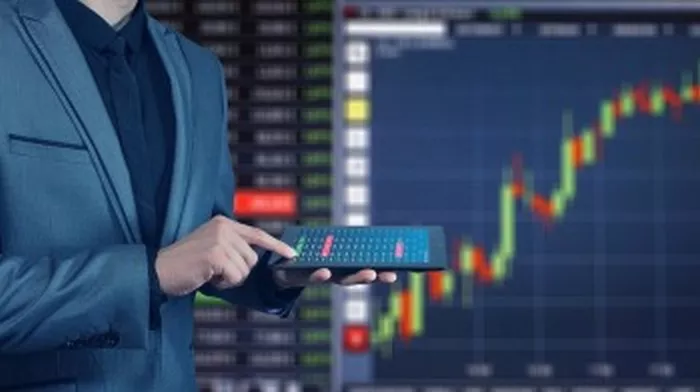Treasury futures offer investors and traders an opportunity to participate in the U.S. government bond market, which is one of the largest and most liquid markets in the world. These futures contracts allow market participants to speculate on or hedge against interest rate movements and fluctuations in the prices of U.S. Treasury bonds. In this article, we will provide a comprehensive guide on how to trade treasury futures, covering the essential aspects of contract specifications, trading strategies, and risk management techniques.
Understanding Treasury Futures Contracts
Treasury futures contracts are standardized agreements to buy or sell U.S. Treasury bonds at a predetermined price on a specified future date. The underlying asset in these contracts is typically a Treasury security with a specific maturity, such as the 2-year, 5-year, 10-year, or 30-year Treasury bond. These contracts trade on regulated exchanges, such as the Chicago Mercantile Exchange (CME) and the Intercontinental Exchange (ICE).
Contract Specifications
Before diving into trading strategies, it is important to familiarize oneself with the key specifications of Treasury futures contracts. These specifications include:
-
Contract Size
Treasury futures contracts have a fixed contract size, which represents the face value of the underlying Treasury bond. For example, a 10-year Treasury futures contract may have a contract size of $100,000.
-
Delivery Months
Treasury futures contracts have specific delivery months, typically corresponding to the maturity of the underlying Treasury bond. Common delivery months include March, June, September, and December.
-
Price Quote
Treasury futures are quoted in points and fractions of a point. Each point represents a change of $1,000 in the contract’s value. For example, a one-point increase in the futures price would result in a $1,000 gain.
-
Tick Size
The tick size refers to the minimum price increment at which Treasury futures contracts can be traded. It represents the smallest price movement possible. For example, if the tick size is 0.01, the contract can be traded in increments of 0.01 points.
-
Delivery and Settlement
Treasury futures contracts can be physically delivered or cash-settled, depending on the exchange and the specific contract. Physical delivery involves the exchange of the underlying Treasury bond upon contract expiration, while cash settlement involves settling the contract’s value in cash.
Trading Strategies for Treasury Futures
Trading treasury futures involves various strategies that aim to capitalize on interest rate movements, yield curve changes, or market volatility. Here are a few commonly used strategies:
-
Directional Trades
Traders can take positions based on their predictions of interest rate movements. For example, if a trader expects interest rates to rise, they may sell Treasury futures contracts to profit from falling bond prices.
-
Spread Trades
pread trading involves taking positions in multiple Treasury futures contracts to profit from the price difference between them. For example, a trader may simultaneously buy a 10-year Treasury futures contract and sell a 5-year Treasury futures contract to capitalize on changes in the yield curve.
-
Calendar Spreads
Calendar spreads involve trading Treasury futures contracts with different delivery months. Traders may take positions based on their expectations of changes in interest rates over time. For instance, a trader may buy a Treasury futures contract with a longer maturity and sell a contract with a shorter maturity to capture potential yield curve movements.
-
Hedging
Market participants, such as bond investors or Treasury bond issuers, can use Treasury futures contracts to hedge against potential interest rate risks. By taking opposite positions in futures contracts, they can offset potential losses in their bond holdings if interest rates move unfavorably.
Risk Management in Treasury Futures Trading
As with any trading activity, risk management is crucial in treasury futures trading. Here are some risk management techniques to consider:
- Position Sizing: Determine the appropriate size of each trade based on your risk tolerance and account size. Avoid overexposure to a single position to mitigate potential losses.
- Stop Loss Orders: Implement stop loss orders to automatically exit a trade if the market moves against your position beyond a predetermined level. This helps limit potential losses and manage risk.
- Diversification: Spread your trading activities across different Treasury futures contracts and other asset classes to reduce concentration risk. Diversification can help mitigate losses from individual trades or market events.
- Stay Informed: Stay updated on economic indicators, central bank announcements, and news that can impact interest rates and Treasury bond prices. This information can help you make informed trading decisions and manage risk effectively.
Conclusion
Trading Treasury futures offers market participants the opportunity to engage in the U.S. government bond market and profit from interest rate movements. By understanding the contract specifications, employing appropriate trading strategies, and implementing risk management techniques, traders can navigate the Treasury futures market with confidence.
Remember that trading futures involves inherent risks, and it is essential to conduct thorough research, develop a trading plan, and practice risk management to ensure long-term success. By applying the knowledge and strategies discussed in this guide, traders can enhance their understanding of Treasury futures and make informed decisions in this dynamic and influential market.

